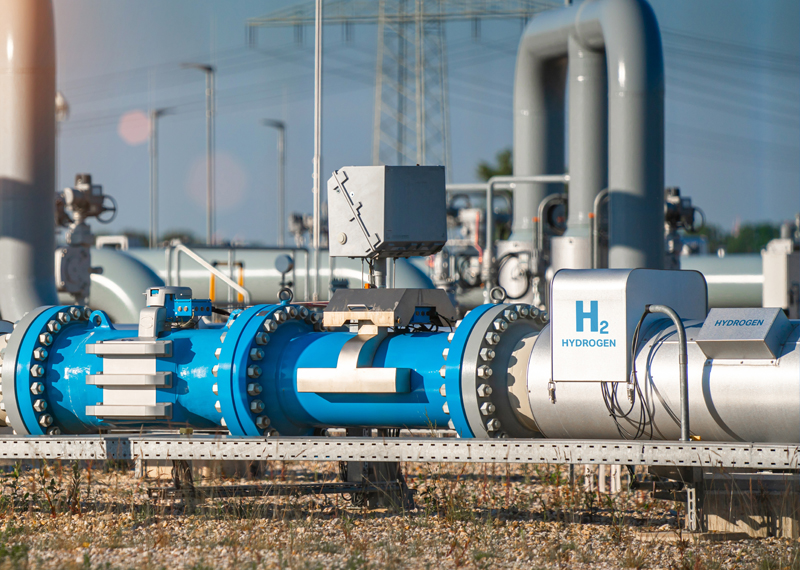White Hydrogen: A New Dawn in Energy Transition - Exploring Paradigm Shifts and Production Techniques
15 February 2024Since the Foundation’s last article on white hydrogen, the discourse surrounding its role in the energy transition has surged. The widely held notion, once propagated by the National Renewable Energy Laboratory, that hydrogen solely exists bound to other elements has been overturned. Recent studies, such as “The occurrence and geoscience of natural hydrogen” by Viacheslav Zgonnik, present compelling evidence suggesting that molecular hydrogen may be more prevalent than previously believed. This paradigm shift has led to the formulation of three plausible mechanisms for hydrogen production, all of which may be concurrently operational:
Radiolysis: The process in which energy from radioactive sources splits water into hydrogen and oxygen.
Serpentistation: The process in which iron-rich rocks react with hot water to yield iron oxide and hydrogen.
Deep-seated formation: A phenomenon that could potentially generate hydrogen within the Earth's core or mantle through yet unidentified processes.
The extraction of hydrogen can be achieved through tapping into hydrogen traps, akin to conventional gas or crude oil extraction; harvesting hydrogen from fractured iron-rich rocks, resembling gas fracking practices; or by injecting water into iron-rich rock formations, resembling enhanced crude oil recovery methods.
Transporting hydrogen poses a significant challenge due to its costliness, making large-scale monetisation of finds like those in Mali's desert, as described in the Foundation’s article "White Hydrogen: A Gold Mine of Clean Energy Hidden in Plain Sight", difficult. Consequently, hydrogen production, whether through green or blue methods, is concentrated in industrial hubs where it can be locally utilised. As a result, exploration endeavours have focused on or near industrialised regions such as Northern France, South Australia, California in the USA, and the Southwest of South Africa.
The growing interest in molecular “white hydrogen” is evidenced by the proliferation of conferences dedicated to the subject. The Geological Society of London conference in July 2023 attracted over 200 delegates, comprising the foremost experts in the field worldwide. While Dr. Ellis of the USA Geological Survey speculated on the potential abundance of free hydrogen to power the world for centuries, concrete evidence remains elusive.
“Most of this (white hydrogen) is almost certainly going to be in very small accumulations or very far offshore, or just too deep to actually be economic to produce. But if just 1% can be found and produced, it would provide 500 million tons of hydrogen for 200 years,” Mr Ellis said.
Nevertheless, the USA's IRA Act allocates substantial funding for “White Hydrogen” exploration, spurring the emergence of several startup companies in the United States and Australia actively seeking investment for further exploration.
While the village of Bourakébougou in Mali may stand as an early adopter of “white hydrogen” for power, towns and cities across the globe may soon integrate this once-deemed elusive element into their electricity grids, marking a transformative shift in energy sourcing.
References
- Jillian Ambrose Guardian Article Sat 12 Aug 2023;
- Unveiling the Mysteries of White Hydrogen: The Ultimate Guide August 20, 2022 By Jake Banks;
- Economist Article – Dec 2023 – The Rush for Colourless Gold;
- “The occurrence and geoscience of natural hydrogen” by V. Zgonnik, 2020;
- “Abiotic hydrogen sources and sinks near the mid-ocean ridge with implications for the subsea floor biosphere” by S. Worman et al,2020;
- “Hydrogen in Australia’s natural gas” by C. Boreham et al, 2020;
- “Natural H2 exploration”, by D. Levy et al 2023;
- “Natural hydrogen: the race to discover and concept demonstration” by PJ Ball& K. K. Czado, Geoscientist 34, 2024;
- “Subduction and hydrogen release”, by I. Moretti, et al, 2023;
- “Major 'White Hydrogen' Deposit Found In France. Here's How It Could Revolutionise The World” – NDTV
